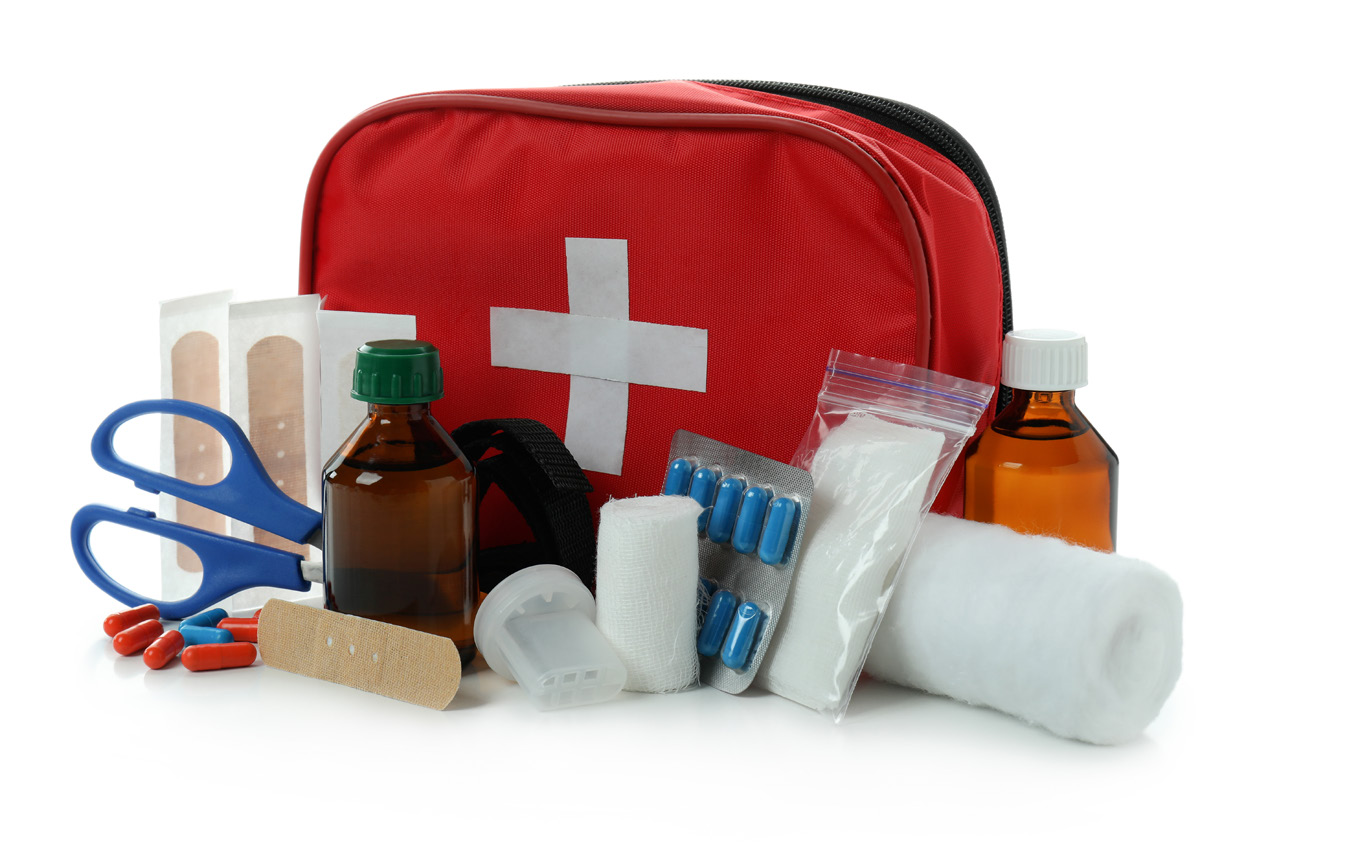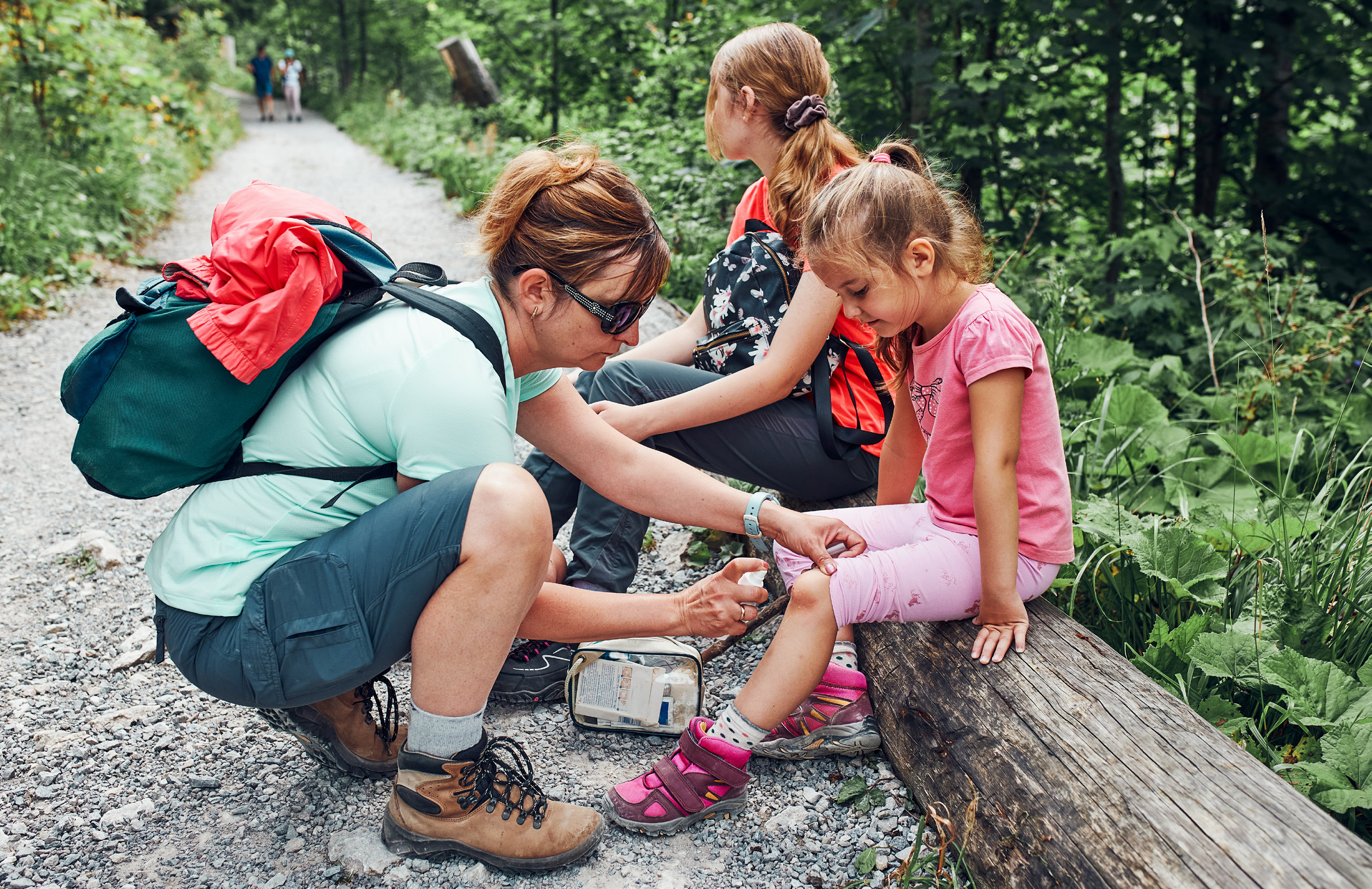Outfitting a First Aid Kit for the Trail or A Vehicle and What to Consider
“What should we carry in our first aid kit?” This is a common question asked of EMTs (Emergency Medical Technicians), search and rescue team members, and outdoor professionals. This may seem straightforward, but the answer is always, “It depends.” Plenty of over-the-counter first aid kits fill many needs, but a kit can also be tailored to specific uses. A well-planned kit will have what you need and eliminate unnecessary items.
The specific context for who, where, and when will help answer the factors around “it depends.” There is a saying in pre-hospital medicine, “You are number one.” This means you must be prepared to take care of yourself first. If you do not or cannot, you won’t be able to assist others. Knowing how your body reacts to stress is paramount to building an appropriate kit and caring for yourself. Also, consider the needs of other members of your group. Are there seniors or infants? Anyone with a severe allergy, diabetes, or other medical history? Knowing the needs is a key first step to being prepared. For example, a person with herniated back discs will likely want anti-inflammatory medication in their kits. If a person in your group regularly gets blisters on their feet on hikes, be sure to bring blister care materials, even for short hikes.
Know the details of the excursion. Are you traveling in freezing or hot conditions; will you go on a short hike in the desert or an extended backpack in the mountains? Answering these questions will help outfit the kit appropriately. When hitting the trail in snowy winterconditions, consider packing extra hand warmers, but swap out chemically-activated ice packs from the summer kit fora few extra plastic zipper bags which can hold snow for an icepack or double for many other needs. For extended trips, consider carrying more medications (e.g., anti-diarrheal, cold medicine, anti-inflammatory, and aspirin). It is also helpful to consider what other items you carry that could be useful in medical situations, such as trekking poles, sleeping pads, sleeping bags, light sources, etc.

Photo: AdobeStock
Even in the most stripped-down kit, some basics are always good to have (see “Baseline Kit Materials”). In addition to those items, a multitool or knife always brings value. This basic list of supplies all weighs under 1.5 pounds. It takes up little space in a pack yet includes things to save a life and enough other items to handle most problems encountered on short hikes. For a bigger trail kit, include the baseline kit materials and those listed under “Larger Kit Materials.” This larger trail kit can also double as a vehicle kit.
Just as important as items in a kit is knowing how to use them. A tourniquet will be useless if you don’t know how to apply it effectively. Familiarize yourself with what is available in a kit, where items are located and how to use them. Consider registering for introductory medical training on CPR (cardiopulmonary resuscitation), first aid, or enrolling in a Wilderness First Aid course. Taking a first aid course every few years is a good way to keep skills sharp. As items get old and expire, they can still be useful. Old tape, dried gauze, etc., can be used for practice. It is much better to practice under calm, non-emergency conditions than to use things for the first time in the field. When medications age, they lose effectiveness and should be replaced. This is exacerbated by being left in extreme conditions. Avoid leaving kits in the car or in extreme temperature conditions for extended periods.
As you spend time on the trail, update kits with what works best for you. A kit should not be a “set it and forget it” item; go through it regularly, even just opening it for a quick look before hitting the trail will keep you aware of what tools you’ve got. Remember, these kits are to help make adventures safer and more pleasurable. They may even help save a life, so don’t skimp to save a few dollars or a few ounces in a pack. First aid kits are tools and ones we hope we never need. If you do, you’ll be happy to have it along.
|
BASELINE KIT MATERIALS LARGER KIT MATERIALS |
Brian Ertel is a Fisheries Biologist with the National Park Service and an EMT.

